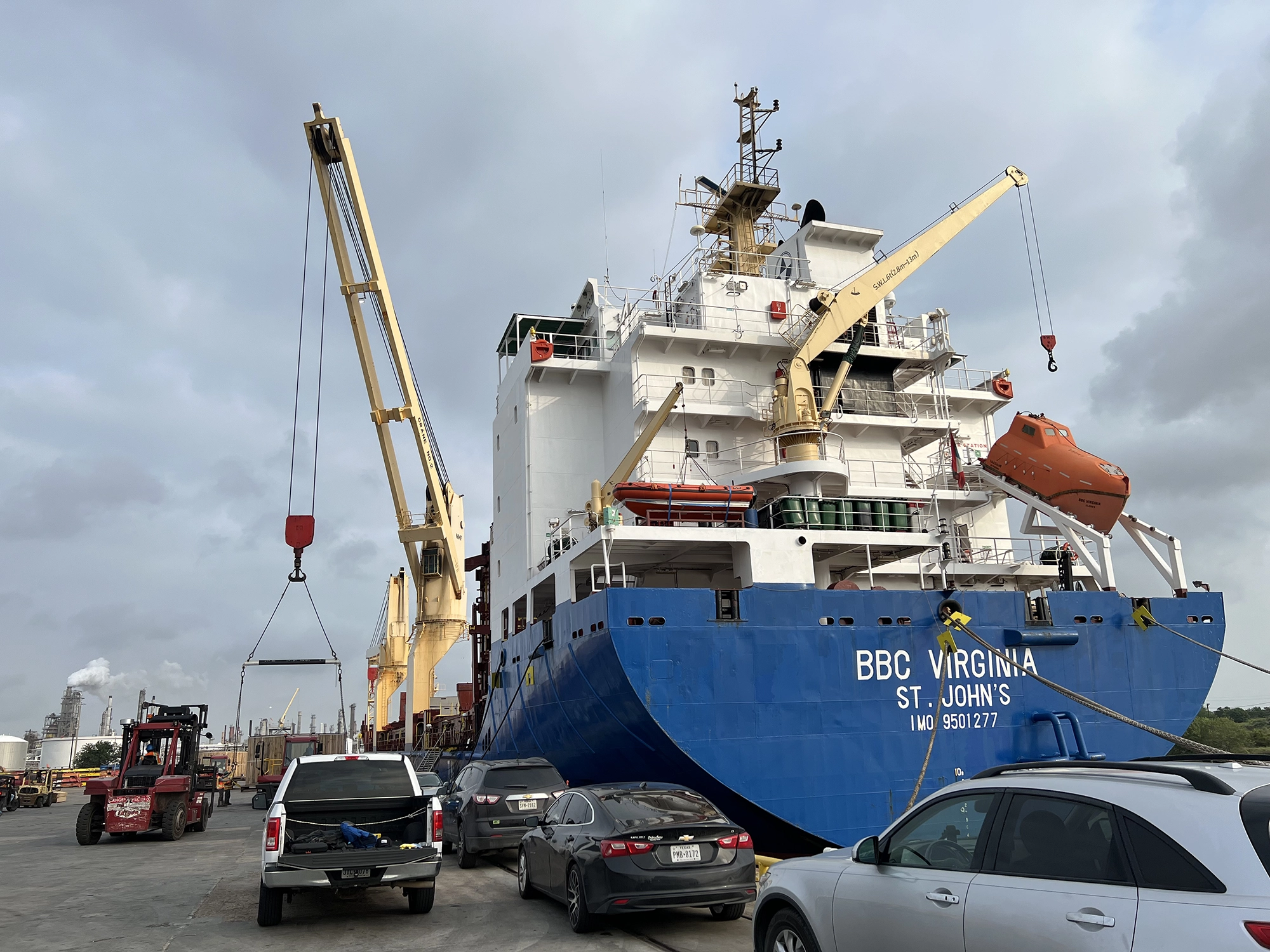
Over the past few months, different members of The Learning Network (TLN) have been working with DHL (and specifically their learning partner Corporate Learning Solutions) on a host of different media enhancement pieces for an upcoming training program involving their Industrial Projects (IP) team. IP is a unique branch within DHL that deals with large-scale logistical solutions that usually involve the transport of goods and products that are bigger and heavier than your average package. They also work with more difficult and longer transportation methods, including shipping containers and other massive pieces of equipment or materials that would be transported across oceans and different continents. If a company is trying to ship gigantic machine components manufactured in southeast Asia up to a new factory site in South America, then the DHL IP team is who they would engage to make it happen.
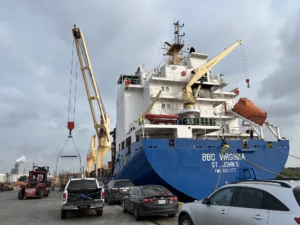
Part of the media enhancements that TLN has been working on for this DHL IP training is a 360 Interactive Experience that learners will work through as part of their two-day in-person training. The intention of this experience is to give the learners the experience of being on site at a port like one that DHL would use to ship cargo that IP would coordinate as part of their projects. Often, the IP team would not be directly on-site to see how the cargo gets packaged and moved; they are more involved with coordinating the logistical aspects between different team members, contractors, and chartered vessels and vehicles. Ideally, the learners would be able to take a guided tour of an actual port location to see first-hand how everything is done and get a real scale for these operations. These types of tours, however, are quite difficult and time-consuming to coordinate and ports are not always easily accessible at the locations where these training sessions are to be hosted across the world. TLN’s 360 Interactive Environment is perfect for bringing the DHL IP learners as close to the port tour experience as possible without actually being there. It also allows our teams to curate a 360 experience that shows the progression of how different types of cargo can be moved from a manufacturer to a DHL warehouse and eventually to a port location to be loaded on a shipping vessel.
This 360 Interactive learning solution began with its own set of logistical planning steps, as it would require an on-site photo and video shoot with a 360-degree camera. We also determined that this shoot would also be the perfect time to take a lot of standard photos and videos that could be utilized as visual accompaniments and “B-roll” for the experience. The possibility of utilizing drone photography was also brainstormed, and with these details in mind the team set out to find a suitable location for the shoot. 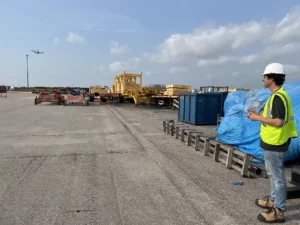 DHL utilizes many different ports globally and has relationships with the various port authorities for engaging in logistical shipping discussions, and after some consideration, the port at Houston, Texas was selected as the site for the shoot. The teams were able to determine a shooting schedule as well as a rough plan for the locations that would be best for capturing footage to be used in the 360 experience. After seeking permits and permissions to be able to film, including gaining FAA clearance for flying a drone, the Port of Houston granted the TLN and DHL teams access to film at three different locations in late May of this year. I was part of the team from TLN that travelled to southeast Texas for this shoot.
DHL utilizes many different ports globally and has relationships with the various port authorities for engaging in logistical shipping discussions, and after some consideration, the port at Houston, Texas was selected as the site for the shoot. The teams were able to determine a shooting schedule as well as a rough plan for the locations that would be best for capturing footage to be used in the 360 experience. After seeking permits and permissions to be able to film, including gaining FAA clearance for flying a drone, the Port of Houston granted the TLN and DHL teams access to film at three different locations in late May of this year. I was part of the team from TLN that travelled to southeast Texas for this shoot.
The TLN and DHL teams travelled to Houston from several different countries for this two-day shoot, and the experience was incredibly successful. The shoot coincided with a vessel being loaded with shipments of pipe spools that were part of an actual DHL project, which were delivered directly to the port and immediately loaded onto the contracted shipping vessel with a large vessel-mounted crane. As part of the shooting schedule that day (and as coordinated prior to arrival), we were granted access on-board the vessel and were able to shoot footage from a high vantage point near the captain’s deck of the ship. This provided an incredible scale and view of the whole port operation, and some wonderful footage was captured during the time aboard the vessel.
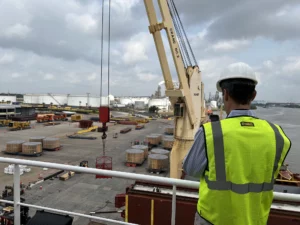 The drone was also utilized during this loading process, which gave us a “bird’s eye” view of everything involved with the rigging of the cargo, the crane lift, and the loading and securing of the cargo directly into the ship’s hull. This perspective would not have been possible without the great work of our logistical partners with the DHL IP team, and we were very grateful that things worked out as they did.
The drone was also utilized during this loading process, which gave us a “bird’s eye” view of everything involved with the rigging of the cargo, the crane lift, and the loading and securing of the cargo directly into the ship’s hull. This perspective would not have been possible without the great work of our logistical partners with the DHL IP team, and we were very grateful that things worked out as they did.

The second day of shooting took the team to a different port location further south from the city at a terminal that was mostly utilized for large container shipments. This location was exponentially larger in area, as it was home to a huge amount of shipping containers that are stored and organized around a 314-acre container yard. This terminal is state-of-the-art and includes a large amount of automation in terms of scanning trucks and cargo entering and exiting the facility, and the cranes and lifting equipment that are utilized are massive and impressive to say the least. Our local DHL IP team expert described the activity at this terminal as a “heavy machinery ballet” with all the carefully coordinated activities involved huge cranes and vehicles, and I can tell you from first-hand experience that the description is very fitting!
Towering above everything else at this container terminal are the impressive row of S2S (Ship-to-Shore) Cranes lined up along the port’s quay. These cranes were lifting containers transported by trucks on the ground up onto enormous container cargo vessels with an efficiency that was quite staggering given their size and scale. The cranes are capable of lifting these containers above 30 metres, which is over 7 stories in height! As part of our shooting schedule, we were able to fly our photography drone amongst these giant structures during the lunch break downtime. The resulting images that we captured were quite astounding and some of the coolest and most interesting shots we captured over a very exciting couple of days.
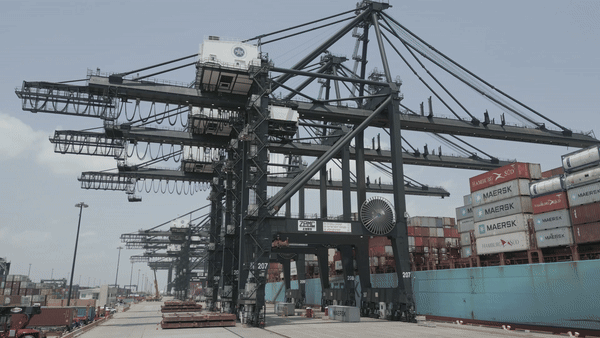
Now that we have returned with this bounty of video footage and photographic content, our teams have been working hard at stitching the 360 project together into a linear experience with interaction points along the way that provide operational and safety-related information about the shipping and transportation process. We are also inserting images, videos, and drone footage to give learners a real hands-on atmosphere to the experience so that they can feel as if they have been transported to a working port location without needing to set foot on the premises. This 360 Interactive Experience will be accessed by the learners using mobile devices, such as smartphones or tablets, but it can also be accessed in virtual reality as a completely immersive experience using a VR headset.
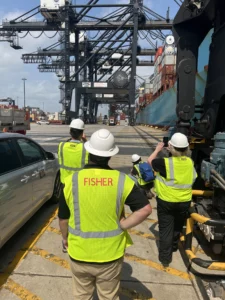 Both TLN and DHL are very excited to see the finished product of this shoot, and we are incredibly grateful to all of the locations that the Port of Houston Authority granted us access to. We at TLN pride ourselves on providing innovative learning solutions that will stick with our client’s learners long after they experience them, and this project is one of our most exciting undertakings yet.
Both TLN and DHL are very excited to see the finished product of this shoot, and we are incredibly grateful to all of the locations that the Port of Houston Authority granted us access to. We at TLN pride ourselves on providing innovative learning solutions that will stick with our client’s learners long after they experience them, and this project is one of our most exciting undertakings yet.
For more information on 360 Interactive Experiences, along with other forms of traditional and XR-based learning solutions, contact us or visit us at our website.
Leave a comment
You must be logged in to post a comment.

